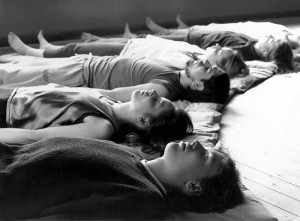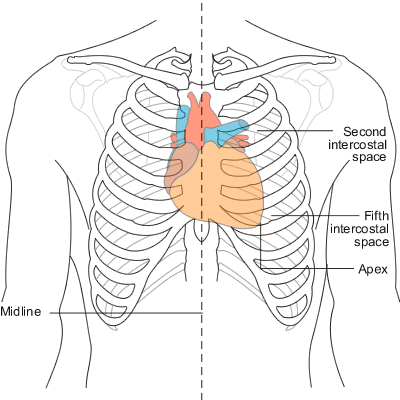I wanted to bring light to a dynamic in teaching that involves taking unexplained methods for granted. I have always been a fan of reductionism in pedagogical practices as it relates to responsible teaching and understanding the methodology we endorse.
I took a seemingly simple question and posted it to a forum of yoga students and teachers. I have the responses belows and have removed the names to protect the innocent.
The question:
Why do we roll to the right side after savasana?
The answers:
“I had two different teachers tell me it was to keep your heart higher. Rolling on to the left side would apparently make it 18 cm lower.”
“I always thought it was more of a ritual thing. There’s no appreciable difference in health or wellbeing between lying on your left to lying on your right.”
“I thought it was because you are supposed to roll over to get up, and if some people roll left and some roll right then people will collide.”
“I’ve been told that it’s to keep your weight off of the left side of your body, where your heart is. Personally, I don’t believe it matters which side you lie on — I mean, how could people sleep if it was significant to stay on your right side?”
“The important thing in a crowded class is to have everyone roll the same way so you don’t have people rolling onto each other or breathing in each others’ faces. Otherwise: left, right, doesn’t matter — but yoga tends to be about doing things in a certain way because that’s how they were taught, and never questioning if it’s reasonable.”
“ Your heart is in the center of your chest so that doesn’t matter. ( Basically, it is in the center. 9cm to the left doesn’t really count in my book.)”
“I’ve never been told by any yoga teacher to roll to the right only; they just say, “roll onto your side.”
 “The heart is only a bit off center but it pumps fresh oxygenated blood out the aorta towards the left arm. The circulatory system (like other systems) is asymmetrical and there is a slight increase of blood pressure when laying on the left side vs. the right side.”
“The heart is only a bit off center but it pumps fresh oxygenated blood out the aorta towards the left arm. The circulatory system (like other systems) is asymmetrical and there is a slight increase of blood pressure when laying on the left side vs. the right side.”
Don’t know if this is the whole story, but I’ve definitely had teachers from different schools tell me to lay only on the right side.”
“I was taught it’s an energy thing: Laying on your right side helps wake you up, whereas laying on your left prepares you for sleep. “
“Personally, I don’t think it matters what side you roll to, so long as you’re comfortable in your position. I teach rolling to the right partly because I was taught to do so and partly because I want everyone on the same side. Right is as good as left, in this case.”
“My yoga instructor related it to the stomach of all things. The tubing for your stomach lies on the left side. So when you roll onto your right you are helping to keep the contents inside instead of slowly creeping back up the tube. Not sure if this makes sense”
“It does not matter…. You can go to either side. Be mindful of your neighbors though.”
“I know is that when I have to pee and it is really early in the morning and I don’t want to get out of bed, I can roll onto my right side and sleep for another hour. But if I have to pee, and I roll onto my left, its time to go!so… for me… its so I can wait until the end of practice to pee. “
“Traditionally in yoga you roll to the right during the day to honor the sun and roll to the left in the evening to honor the moon. “
“I’ve been told that the right main bronchus subdivides into three lobar branches, whereas the left only divides into two. Each feeds a different part of the lung, which could be conceived as “compartments”. You have 3 compartments in your right lung and only 2 in the left, so it decreases your chance of becoming lightheaded if you roll to the right.”
“Laying on the right side is supposed to allow your natural blood pressure to reach its potential balance.”
These are all very excellent reasons. I can find logic in nearly everyone of them on the basis of personal experience, scientific reasoning, ritual practice and simply following direction. What this demonstrates, is that something as simple as choosing one of two ways to do the most simple thing, can bring in a variety of justifications and assumptions if the correct knowledge is not conveyed properly. Consider the extremely confounded topics we teach in yoga on a regular basis. I feel that teaching involves a great amount of responsibility to not only correctly teach what we have been taught, but also discover for our own validation the methods that we are passing along. At this point, if a student asked me what is the main reason students are always asked to roll to the right side, I would not be able to give an honest answer.
